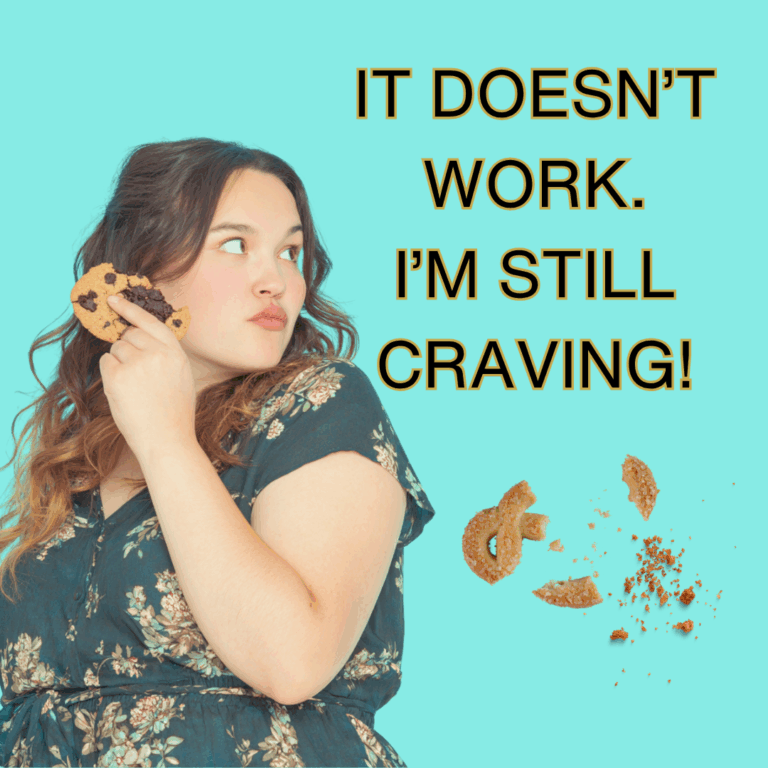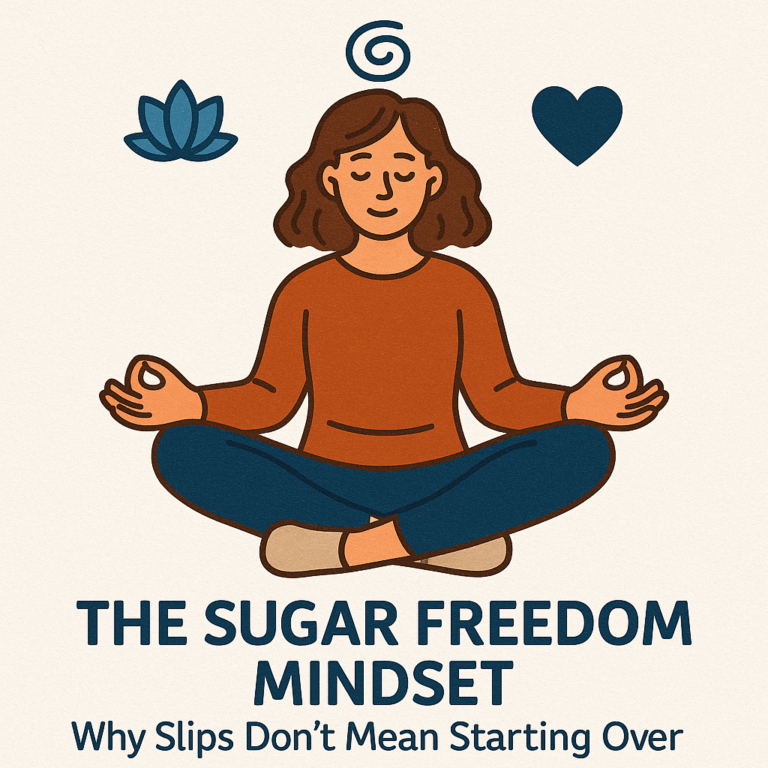By Mike, The SugarFreeMan
Founder of SugarDetox.com and the 30-Day Sugar Freedom Challenge

Featured Snippet Summary:
Most diets fail because they treat symptoms, not the cause – sugar and refined flour. Removing these addictive substances resets your body’s biochemistry and makes long-term recovery possible.
This article was review by Dr. Camela McGrath, MD, FACOG. Find more about her here
A Familiar Question (and an Unexpected Connection)
Growing up, I heard the same question over and over:
“Hey Mike, are you related to Judy Collins – the singer?”
If the guy was a jerk, I’d just say, “Yeah, she’s my aunt – third cousin, twice removed,” just to end the conversation.
Truth is, we’re no relation.
Well… maybe sort of.
Because after reading Judy’s book Cravings: How I Conquered Food, I realized she’s one of us.
Someone who’s walked through the same madness – the binges, the guilt, the desperate search for peace with food – and finally found freedom.
Judy’s Story – and Ours
In her book, Judy tells the story of decades lost to dieting, self-blame, and confusion. She unpacks the rise and fall of countless diet trends – from the Master Cleanse to the Cabbage Soup Diet – and the little-known origins of Overeaters Anonymous (OA).
She’s honest about what worked, what didn’t, and why most programs failed her.
The turning point came when she discovered one simple principle that finally set her free:
No Sugar. No Flour.
And there it is again.
After 35 years sugar-free, I can tell you – every diet that’s ever worked long-term boils down to that same rule. You can wrap it in lemon water, charcoal cleanses, or keto macros, but the truth never changes.
Pull Quote: “Every lasting transformation starts when you remove sugar and flour – not when you find the perfect diet.”
The Hidden Truth Behind Every “New” Diet
If you flip through any best-selling diet book from the past fifty years, you’ll find some trendy hook –
cucumber juice, intermittent fasting, detox teas, or some new cleanse.
But buried somewhere near the back, almost like an afterthought, you’ll see it:
“Avoid sugar and white flour.”
That’s the real key. It’s just never marketed as one because no one can sell you “No Sugar, No Flour.”
Here’s why it works:

- Sugar and flour hijack your brain. Studies from the NIH show that refined sugar lights up the same dopamine pathways as addictive drugs like cocaine. (Source: NIH)
- They keep you trapped in cravings. Once your insulin spikes, you crash – which triggers another craving, another “treat,” and another crash.
- They distort your hunger signals. You start eating for dopamine, not for nourishment.
When you take sugar and flour out, everything else gets easier – not because you’ve suddenly developed “willpower,” but because you’ve removed the drug.
Why Most Diets Fail
Here’s the brutal truth most programs won’t tell you:
Diets fail because they’re built on restriction, not recovery.
When you go on a cleanse or a 30-day challenge without addressing the addictive pull of sugar and flour, you’re white-knuckling your way through withdrawal.
You lose weight. You feel good. And then one “harmless” treat brings the flood back in.
Research shows that less than 1% of men ever reach their goal weight – and fewer than 1% of those maintain it. That’s 1% of 1%.
Read that again.
That’s not because people are weak. It’s because they’re trying to manage addiction with willpower.
Recovery doesn’t start with another diet. It starts with removing the drug.
The Real Work Begins After the Detox
The first 30 days are the easy part. Anyone can push through a short challenge when they’re motivated. The real challenge begins when the detox is over and the sugar voice whispers:
“You’ve been good… you deserve a little treat.”
That’s when most people slide back.
What we do at SugarDetox.com is different.
We don’t just help you quit for 30 days – we help you rebuild your life around sugar freedom.
If you’re serious about this, our 30-Day Sugar Detox Challenge walks you step-by-step through the process.
You’ll learn how to manage cravings, rebuild your biochemistry, and find freedom that lasts.
You don’t have to guess anymore.
What Judy Got Right – and Where Most Programs Go Wrong
When Judy talks about OA (Overeaters Anonymous), she’s not critical – she’s honest. OA was built on the same foundation as Alcoholics Anonymous, and it helped millions. But for many, it fell short when it came to sugar.
Sugar is a drug that hides in plain sight. It’s legal, it’s everywhere, and most people still don’t believe it’s addictive.
Judy found her success through an OA offshoot program that focused on complete abstinence from sugar and flour – the same principle that’s guided my life for 35 years.
No sugar. No flour. Real recovery.
That’s why I say she’s family. She gets it.
How to Make “No Sugar, No Flour” Work in Your Real Life
You don’t have to be perfect. You just have to start.
Here’s how to make this approach sustainable – for life:

1. Clean your environment
Remove the triggers. Don’t keep “just in case” snacks. Your environment should reflect your goals, not your cravings.
2. Eat real food
Focus on protein, vegetables, healthy fats, and natural fiber. Real food stabilizes your blood sugar so you can trust your hunger again.
3. Get support
You can’t heal an addiction in isolation. Surround yourself with others who understand. Join our free Sugar Detox Support Group – it’s full of people walking the same road.
4. Expect the emotions
When you remove the numbing effect of sugar, feelings come up. That’s part of healing, not failure. Be kind to yourself.
5. Focus on freedom, not perfection
This isn’t about deprivation. It’s about recovery. Every day sugar-free is a step toward the life you actually want.
You Deserve Long-Term Freedom
Aunt Judy (we’ll call her that) struggled for most of her adult life before she found what worked. You don’t have to wait that long.
If you’re ready to stop starting over, our 30-Day Sugar Detox Challenge will show you how to remove sugar, reset your body, and finally live free.
You’ve done diets. Now it’s time for recovery.
About the Author
Mike Collins, known as “The SugarFreeMan,” has been sugar-free for over 35 years and is the founder of SugarDetox.com. He has helped tens of thousands of people break free from sugar addiction through his evidence-based approach combining nutritional science with practical behavior change strategies.
Medical Disclaimer
This article is for educational purposes only and is not intended to replace professional medical advice. Always consult with a healthcare provider before making significant dietary changes, especially if you have underlying health conditions.
FAQ Section
1. What does “No Sugar, No Flour” mean?
It means eliminating refined sugars and processed flours – the substances that trigger cravings, blood sugar spikes, and addiction-like behaviors.
2. Why do most diets fail?
Because they rely on willpower instead of addressing the addictive nature of sugar and refined carbs. Once you remove the drug, success becomes sustainable.
3. Is sugar really addictive?
Yes. Research from the NIH and Harvard shows that sugar activates the same reward centers in the brain as drugs like cocaine or nicotine.
4. How long does it take to detox from sugar?
Physical cravings usually ease after 10–14 days, but emotional and habitual recovery can take several weeks – that’s why structured support matters.
5. Can I eat fruit on a sugar detox?
Yes, in moderation. Whole fruits contain fiber and nutrients that slow absorption, unlike refined sugar.
6. What makes the 30-Day Sugar Detox Challenge different?
It’s not a diet – it’s a guided recovery process that helps you remove sugar, balance your body, and rebuild your habits for long-term freedom.






